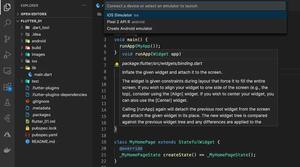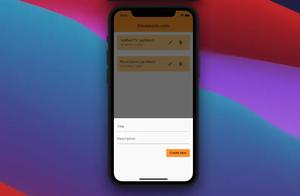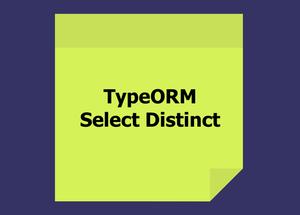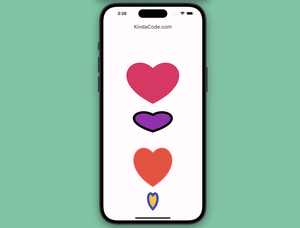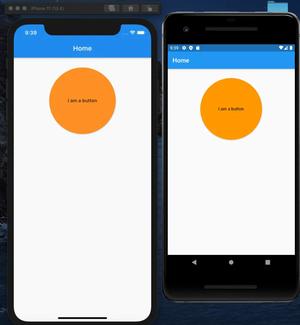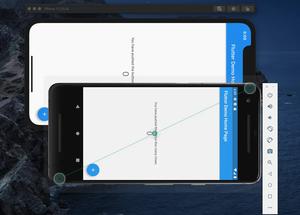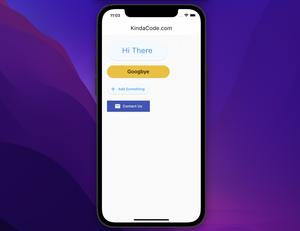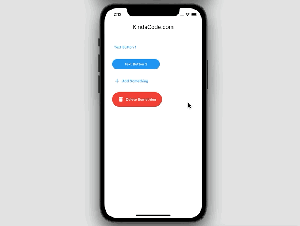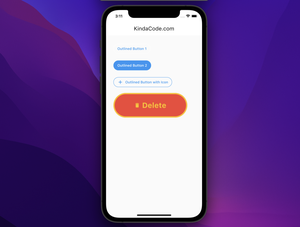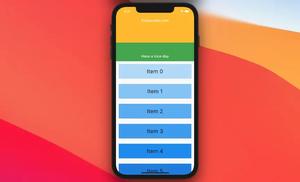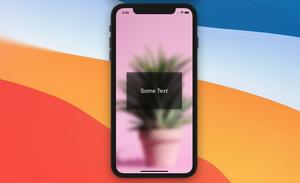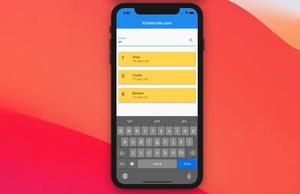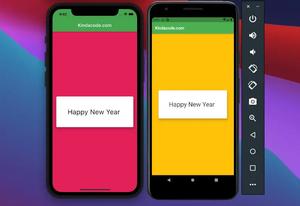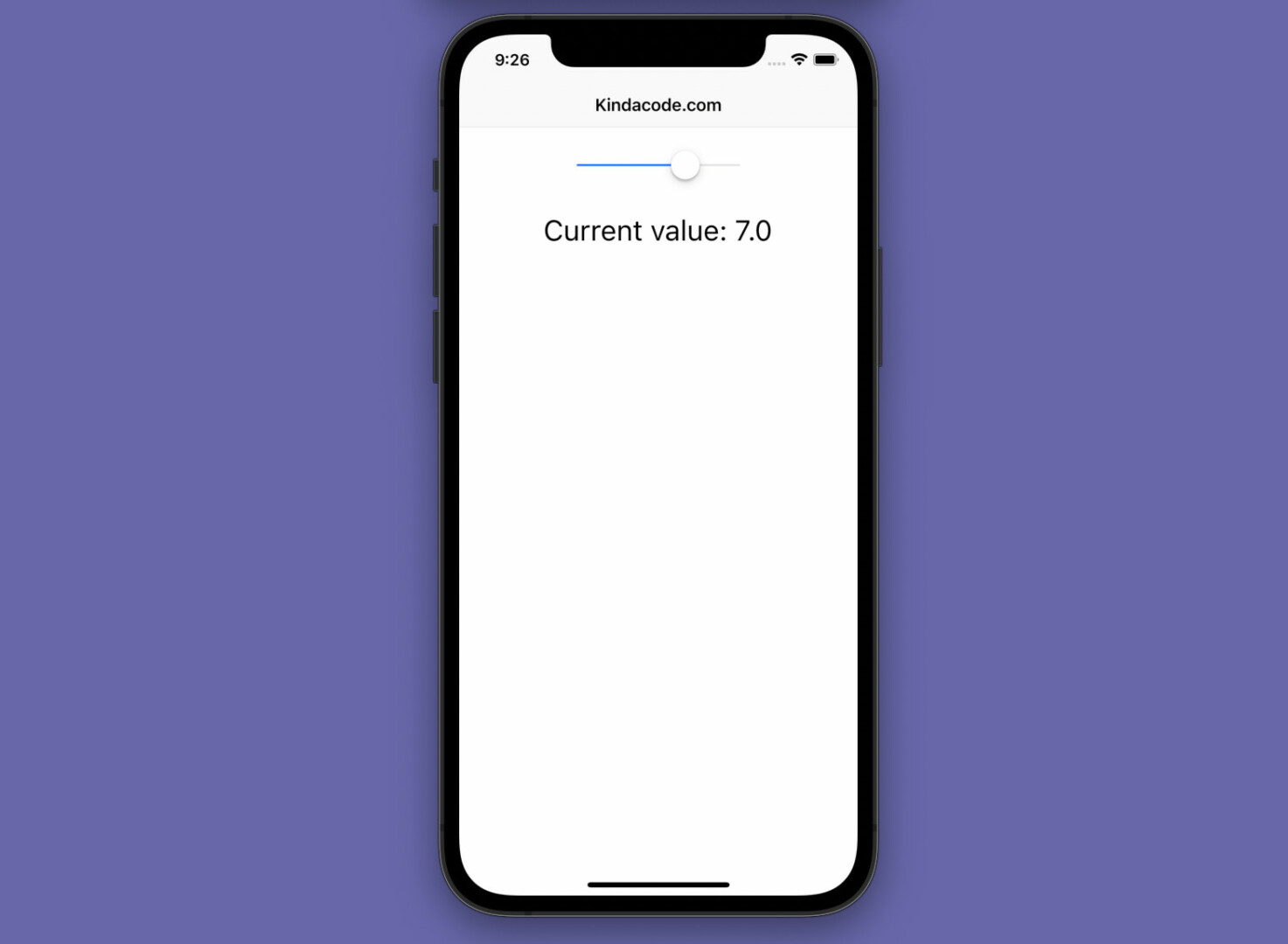
This article walks you through a complete example of using CupertinoSlider, an iOS-style widget in Flutter that lets the user select from a range of number values.
Table of Contents
A Prefatory Note
A CupertinoSlider widget requires 2 parameters:
- value: The current value of the slider (type: double)
- onChanged: A function called whenever the user moves the slider’s thumb (some people call it cursor) and returns the newly selected value.
The Example
Preview
What we’re going to build is a sample app that contains a slider and a text widget in the center of the screen. When the slider changes, the selected value will be immediately reflected in the text widget, as shown below:
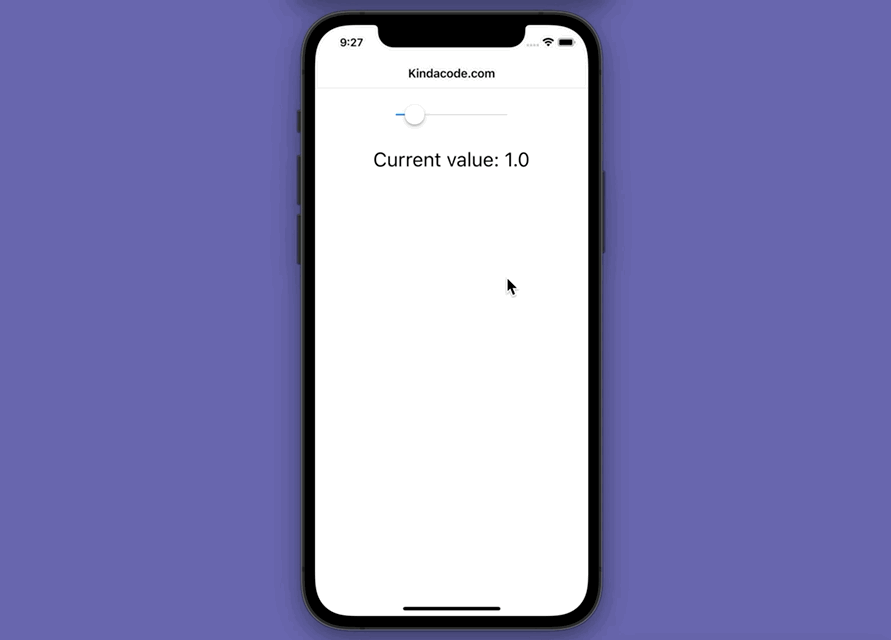
The Code
In order to use a Cupertino widget, you have to import the Cupertino library as follows:
import 'package:flutter/cupertino.dart';Here’s the complete code (with explanations):
// main.dart
import 'package:flutter/cupertino.dart';
void main() {
runApp(const MyApp());
}
class MyApp extends StatelessWidget {
const MyApp({Key? key}) : super(key: key);
@override
Widget build(BuildContext context) {
return const CupertinoApp(
// Remove the debug banner
debugShowCheckedModeBanner: false,
title: 'Kindacode.com',
home: MyHomePage(),
);
}
}
class MyHomePage extends StatefulWidget {
const MyHomePage({Key? key}) : super(key: key);
@override
State<MyHomePage> createState() => _MyHomePageState();
}
class _MyHomePageState extends State<MyHomePage> {
// this will be displayed on the screen
double _currentValue = 1;
@override
Widget build(BuildContext context) {
return CupertinoPageScaffold(
navigationBar: const CupertinoNavigationBar(
middle: Text('Kindacode.com'),
),
child: SafeArea(
child: Container(
padding: const EdgeInsets.all(15),
width: double.infinity,
child: Column(children: [
// Implement the Cupertino slider
CupertinoSlider(
value: _currentValue,
min: 0,
max: 10,
divisions: 10,
onChanged: (selectedValue) {
setState(() {
_currentValue = selectedValue;
});
}),
const SizedBox(height: 25),
// display the result
Text(
'Current value: ${_currentValue.toString()}',
style: const TextStyle(fontSize: 28),
)
]),
),
),
);
}
}Conclusion
We’ve gone over an end-to-end example of using the CupertinoSlider widget to create an iOS-style slider in Flutter. If you’d like to learn more about iOS-style widgets, take a look at the following articles:
- How to use Cupertino icons in Flutter
- Flutter CupertinoSegmentedControl Example
- Example of CupertinoSliverNavigationBar in Flutter
- Flutter: Cupertino ActionSheet Example
- Working with Cupertino Date Picker in Flutter
- Flutter: CupertinoPicker Example
- Using CupertinoSwitch in Flutter (iOS-Style Switch)
You can also check out our Flutter category page or Dart category page for the latest tutorials and examples.


